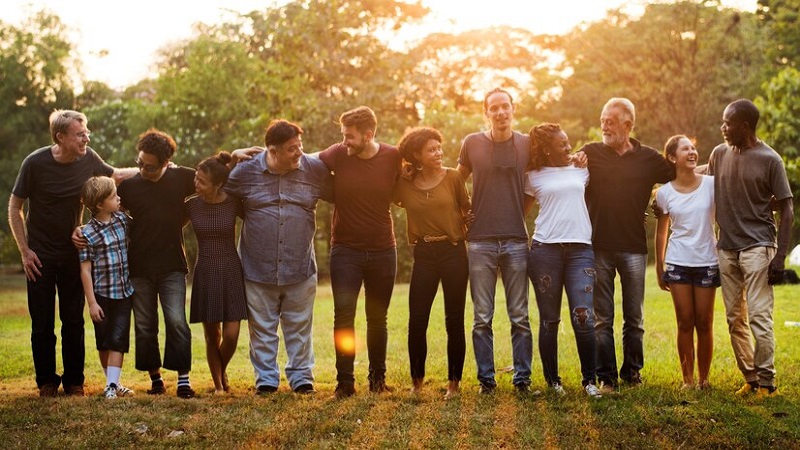In an era dominated by digital communication and virtual experiences, the question arises: is the human gathering fake? This inquiry delves into the authenticity of modern social interactions, exploring how technology, social media, and changing cultural norms influence our sense of community and connection. The examination extends to the psychological impact of these changes and considers whether traditional forms of gathering can still hold significance in a rapidly evolving world.
The Evolution of Human Gatherings: From Tribal Camps to Digital Hangouts
Human gatherings have evolved significantly from the days of tribal camps and communal living. Traditionally, these gatherings were essential for survival, providing a sense of community and shared purpose. Today, the landscape has shifted dramatically, with digital platforms offering new ways to connect. Virtual meetings, social media interactions, and online communities now supplement or even replace face-to-face interactions. This shift raises questions about the quality and authenticity of these modern forms of gathering.
The Role of Technology in Shaping Social Interactions
Technology has revolutionized how we communicate and gather. Social media platforms like Facebook, Instagram, and Twitter enable people to connect with others across the globe, transcending physical limitations. Video conferencing tools such as Zoom and Microsoft Teams have become integral in both professional and personal settings, especially during the COVID-19 pandemic. While these technologies offer convenience and accessibility, they also bring challenges. The lack of physical presence and non-verbal cues can lead to misunderstandings and a sense of disconnection.
The Illusion of Connectivity: Social Media and Its Impact
Social media creates an illusion of connectivity, where the number of friends, followers, or likes can be mistaken for genuine relationships. The curated nature of online profiles often presents an idealized version of reality, leading to comparisons and feelings of inadequacy. Despite being more connected than ever, studies show that many individuals feel lonelier and more isolated. This paradox suggests that social media interactions may not fully satisfy our innate need for meaningful connections.
Virtual vs. Physical Gatherings: Pros and Cons
Virtual gatherings offer numerous benefits, including convenience, accessibility, and the ability to connect with people from diverse backgrounds. They are cost-effective and can be scheduled with ease, accommodating busy lifestyles. However, they lack the tangible elements of physical gatherings, such as touch, presence, and shared physical experiences. Physical gatherings, on the other hand, provide a richer sensory experience and can foster deeper connections through direct interaction. The choice between virtual and physical gatherings depends on the context and the desired outcome of the interaction.
The Psychological Impact of Digital Interactions
The psychological impact of digital interactions is profound. While they provide a platform for staying in touch, they can also contribute to mental health issues. The constant exposure to social media can lead to anxiety, depression, and a fear of missing out (FOMO). The pressure to maintain an online persona can be exhausting and detract from genuine self-expression. Additionally, the lack of face-to-face interaction can hinder the development of social skills and emotional intelligence.
Cultural Shifts: Changing Norms in Social Interaction
Cultural norms surrounding social interaction are changing. The rise of remote work, online education, and virtual social events reflects a broader shift towards digital living. These changes are influencing how people perceive and value in-person interactions. Younger generations, in particular, are growing up in a digital-first world, where online and offline lives are increasingly intertwined. This shift prompts a reevaluation of what constitutes a “real” gathering and how authenticity is defined in a digital age.
Authenticity in the Age of Virtual Reality
Virtual reality (VR) and augmented reality (AR) technologies are pushing the boundaries of what constitutes a gathering. These immersive experiences can simulate physical presence, offering new ways to interact and collaborate. While VR and AR have the potential to enhance connectivity, they also raise ethical and philosophical questions about the nature of reality and authenticity. As these technologies become more prevalent, society must grapple with their implications for human connection and the meaning of genuine interaction.
The Role of Traditional Gatherings in a Modern World
Despite the rise of digital interactions, traditional gatherings still hold significant value. Festivals, family reunions, and community events provide opportunities for face-to-face interaction and shared experiences that digital platforms cannot replicate. These gatherings reinforce cultural traditions and foster a sense of belonging. They remind us of the importance of physical presence and the unique bonds that form through direct human contact.
Strategies for Maintaining Authentic Connections
Maintaining authentic connections in a digital world requires intentional effort. Setting boundaries for social media use, prioritizing face-to-face interactions, and engaging in meaningful conversations can help nurture genuine relationships. Creating hybrid gatherings that combine physical and virtual elements can also offer a balanced approach, allowing people to connect in multiple ways. Emphasizing quality over quantity in social interactions can lead to more fulfilling and authentic connections.
Conclusion: Navigating the Future of Human Gatherings
As we navigate the future of human gatherings, the challenge lies in balancing the benefits of digital connectivity with the need for authentic, meaningful interactions. While technology has transformed how we gather, it is crucial to recognize and preserve the value of physical presence and traditional forms of socialization. By understanding the nuances of both virtual and physical interactions, we can create a more connected and authentic society. Read More Lifestyledod.
